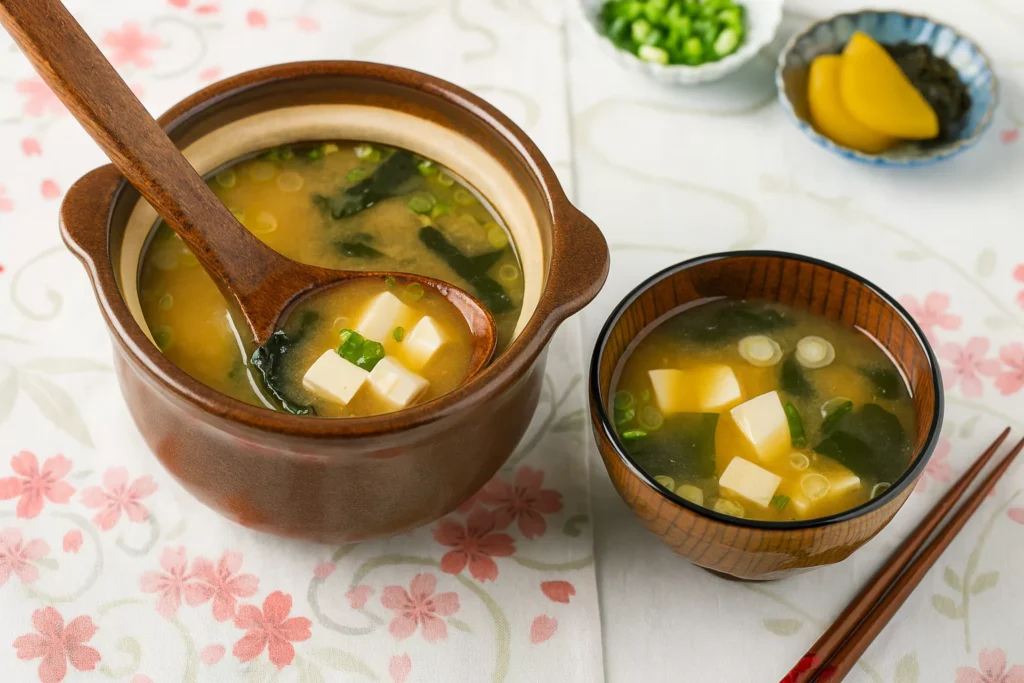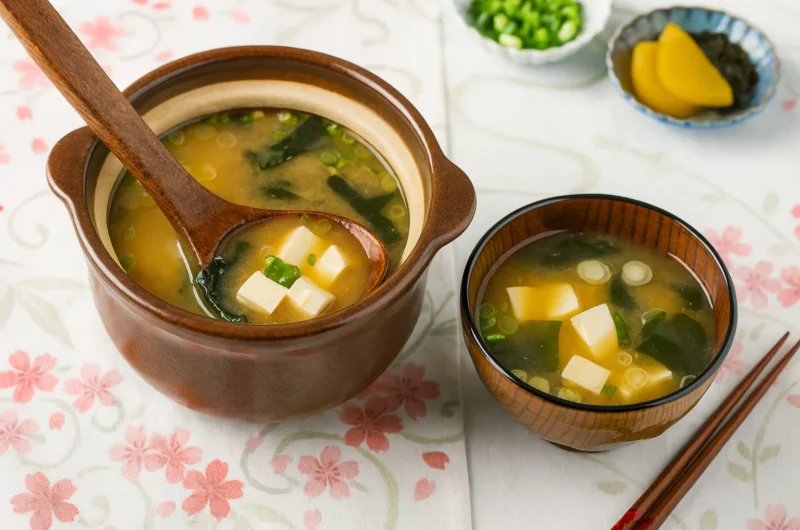If you want to learn how to cook miso soup, you’re in the right place. Have you ever wondered why a small bowl of soup served at the start of a Japanese meal tastes so comforting and full of flavor? You may be surprised to learn that this delicious and healthy dish is easy to make at home. If you’ve always thought miso soup was something you could only get in restaurants, think again! With just a few simple ingredients and some helpful tips, you can learn how to cook miso soup that tastes just like what you’d find in Japan.
Let’s explore how you can bring this traditional dish into your own kitchen.
Jump to Recipe Print RecipeTable of Contents
Why Miso Soup is So Special
Miso soup (味噌汁, misoshiru) is a classic Japanese soup enjoyed with nearly every meal. It’s loved for its warm flavor, healthy ingredients, and ease of preparation. This recipe is:
- Simple – just a few ingredients.
- Quick – ready in about 20 minutes.
- Customizable – easily adapted to what you have on hand.
Anyone, even beginners, can learn how to cook miso soup. You don’t need to be a professional chef to enjoy authentic Japanese flavors at home.
Also try our Shio Ramen Recipe for another comforting Japanese noodle soup made with savory broth and simple toppings.
What is Miso Soup?
Miso soup is a traditional Japanese soup made with dashi (a broth often made with dried kelp and bonito flakes) and miso paste (a fermented soybean paste). It’s typically served with ingredients like tofu, seaweed, and green onions. While it’s simple, miso soup has deep cultural and emotional meaning in Japan—it’s considered a comfort food and a part of daily life.
It also offers many health benefits. Miso is full of probiotics that support digestion, and the soup itself is low in calories while high in nutrients. If you’re curious how to cook miso soup that’s both nutritious and authentic, this guide will help you step by step.

Miso Soup 味噌汁 @JapanDishes
Essential Ingredients
You only need a handful of ingredients to make a traditional bowl of miso soup. Let’s look at each one and why it matters for those learning how to cook miso soup.
For the Dashi (Japanese Soup Base)
- Water (4 cups) – The base for the broth.
- Kombu (1 piece, about 10g) – Dried kelp that gives the soup umami flavor.
- Katsuobushi (1 cup) – Dried bonito flakes used to deepen the flavor. These are optional for vegetarians.
Tip: If you’re vegan or vegetarian, you can skip the bonito flakes and use kombu with dried shiitake mushrooms instead.
For the Soup
- Silken tofu (7 oz) – Soft and smooth, it adds texture and protein.
- Miso paste (4 Tbsp) – The heart of the soup. Use 1 tablespoon for every cup of dashi.
- Dried wakame seaweed (1 Tbsp) – Adds nutrients and a taste of the sea.
- Green onion (1 stalk) – Brings freshness and a bit of crunch.
Ingredient Substitutions
- Use white miso for a sweeter taste, or red miso for something stronger.
- Swap tofu with mushrooms or root vegetables.
- Replace wakame with fresh spinach if needed.
When you know how to cook miso soup, you can easily customize these ingredients based on what you have.
Step-by-Step Instructions
Let’s break it down into easy steps so you can make it perfectly every time. This section is essential if you want to master how to cook miso soup.
1. Prep the Ingredients
- Cut your green onion into thin slices.
- Cut the silken tofu into ½-inch cubes.
- Reminder: Be gentle when cutting tofu. It breaks easily!
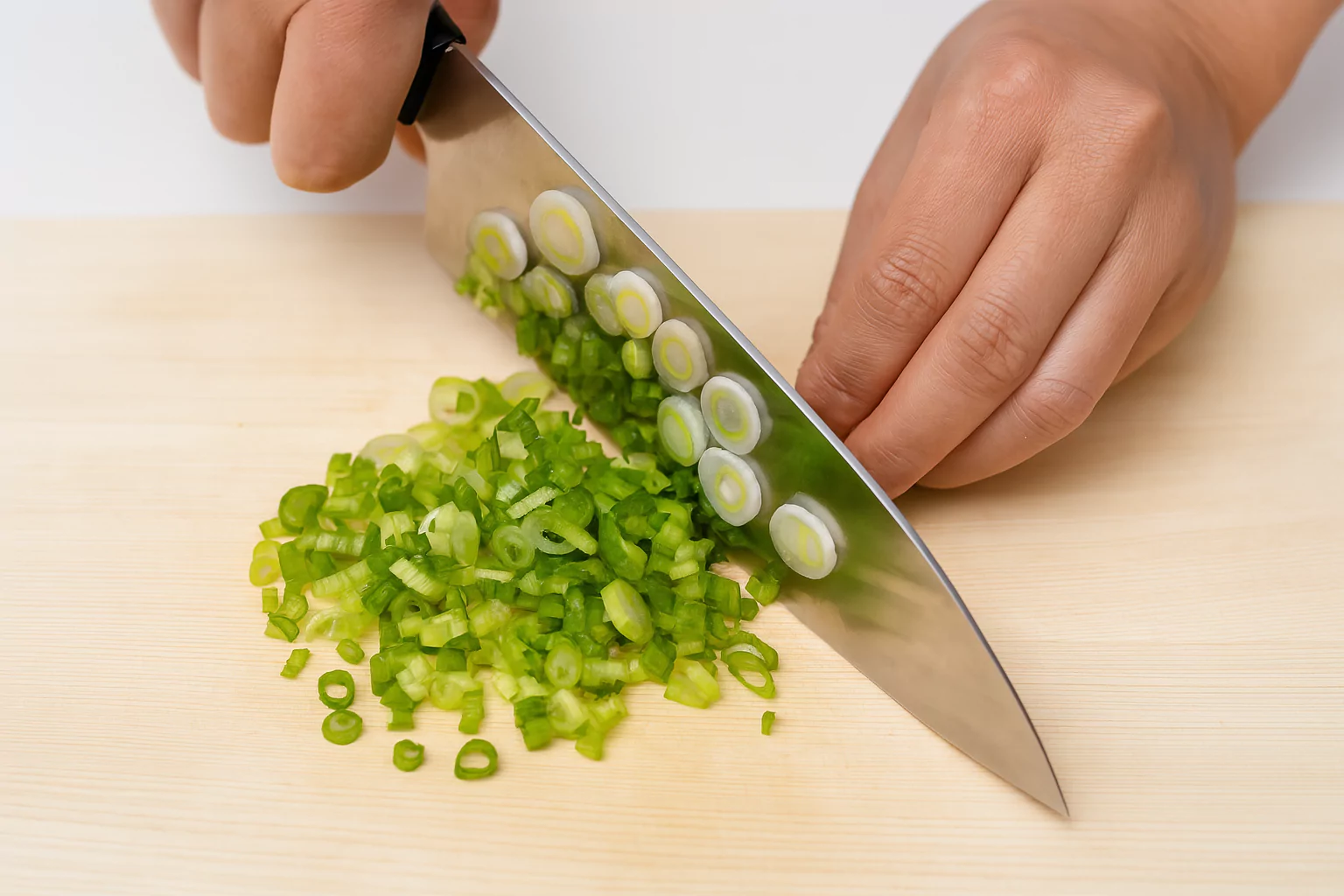
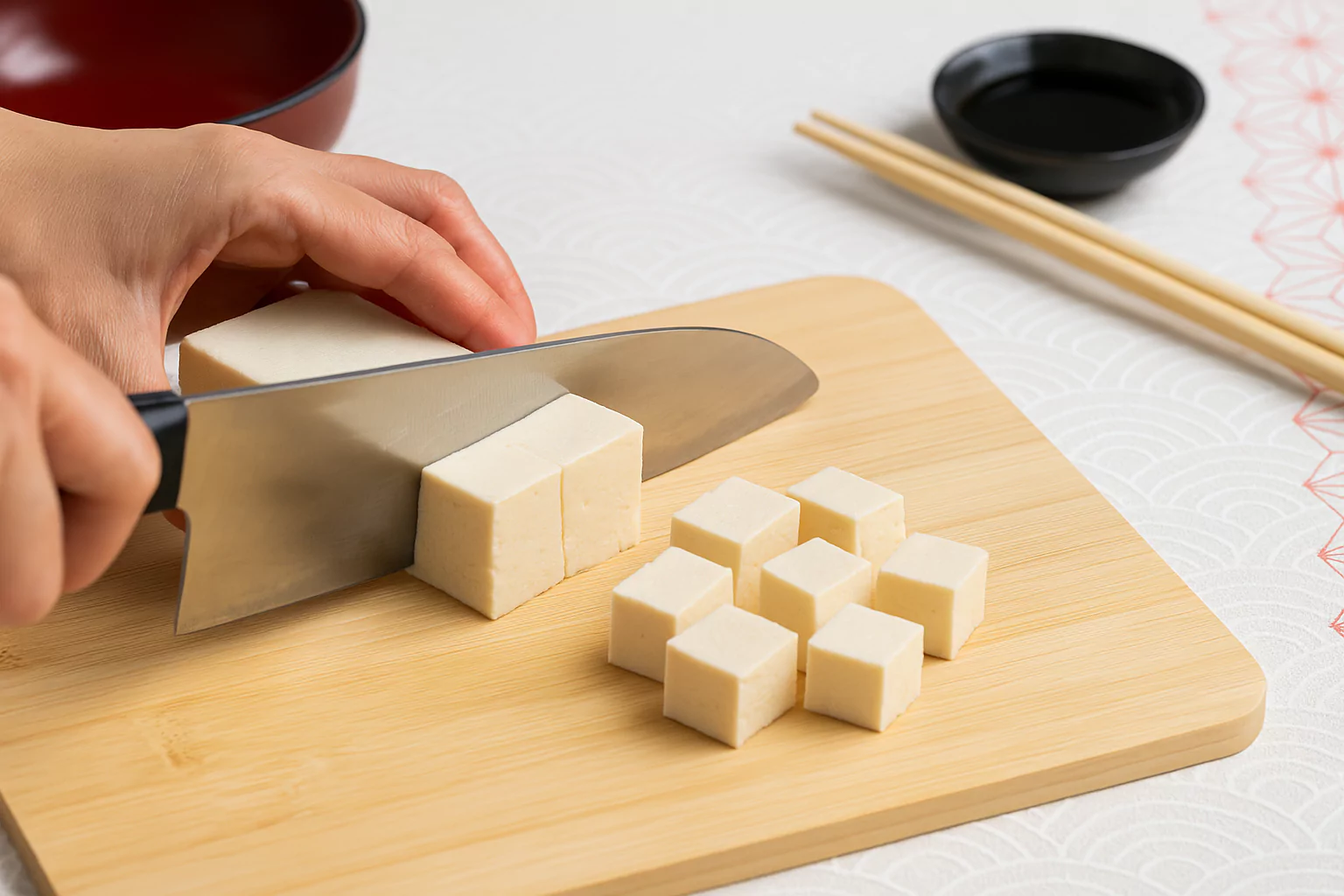
2. Make the Dashi
Dashi is the base of many Japanese soups. Here’s how to make a fresh, flavorful batch:
- Add 4 cups of water and a piece of kombu to a pot.
- Let it sit for 30 minutes (optional but improves flavor).
- Slowly bring it to a boil over medium-low heat.
- Remove the kombu right before the water starts to boil.
- If you’re not vegetarian, add 1 cup of katsuobushi.
- Bring it to a boil again, then simmer for 30 seconds.
- Turn off the heat and let the flakes sink.
- After 10 minutes, strain with a fine-mesh sieve.
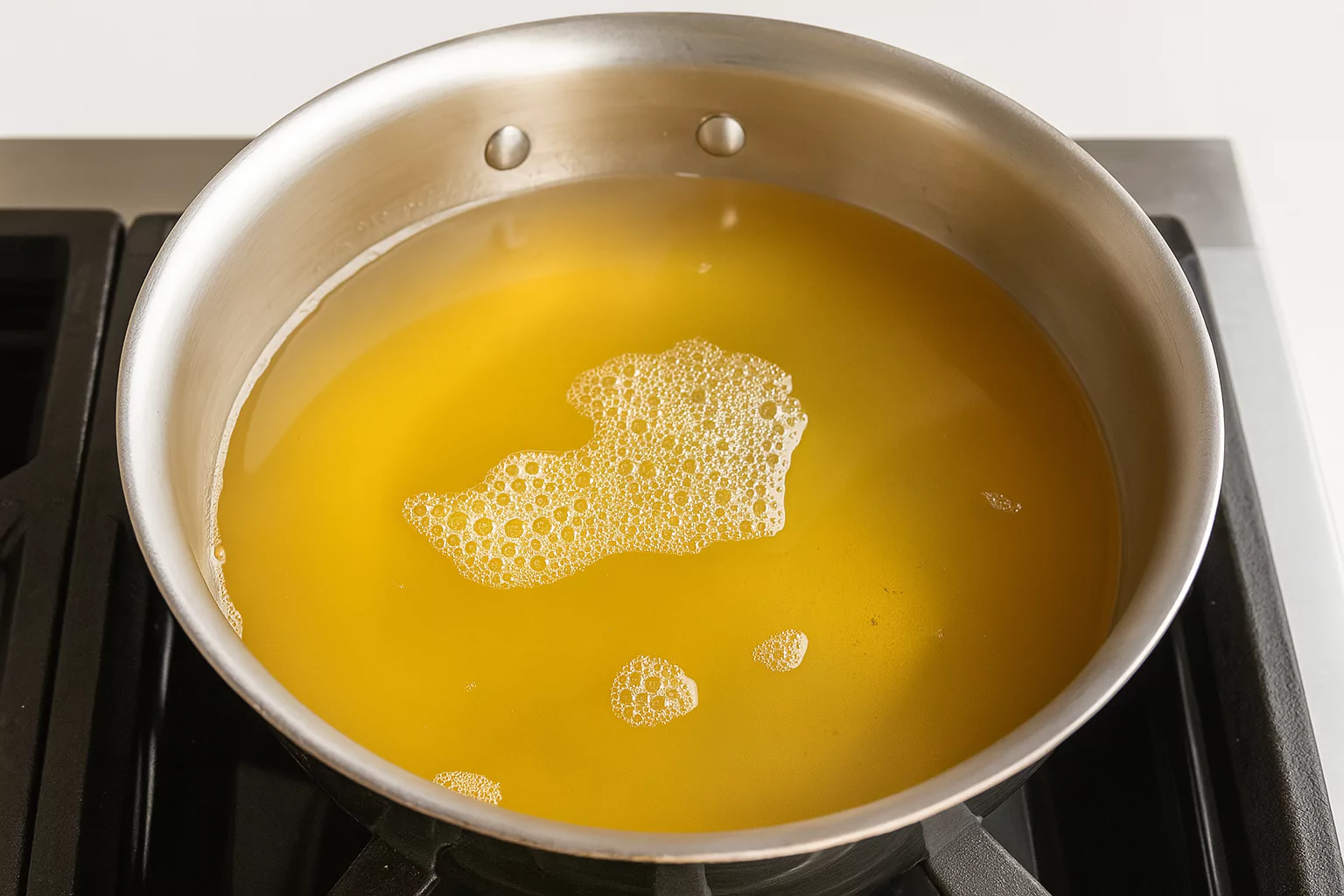
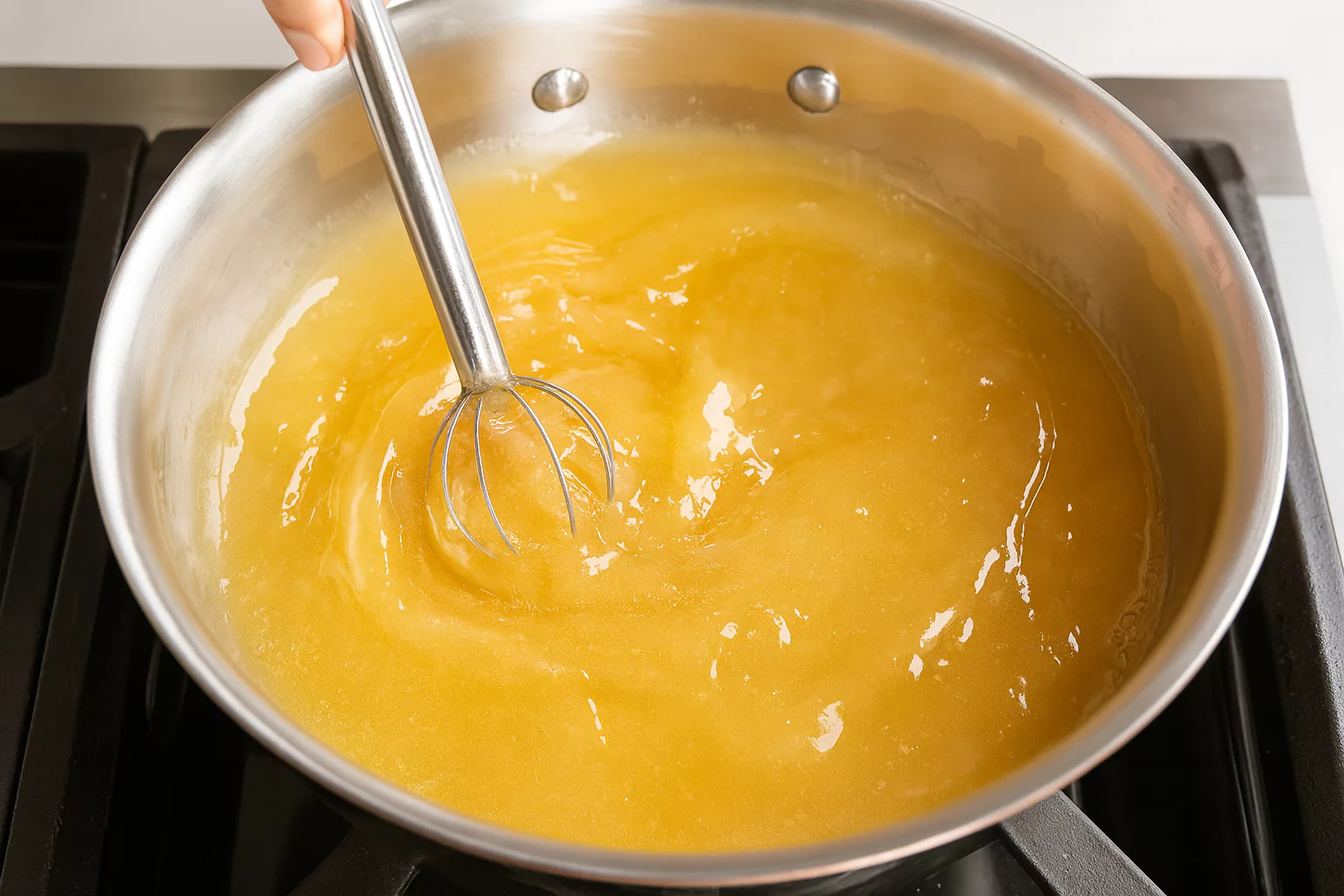
You now have about 4 cups of homemade awase dashi, the perfect base for anyone wanting to learn how to cook miso soup.
Secrets to Success and Expert Tips
Making miso soup might seem simple, but here are a few tricks that can make your soup restaurant-quality. These tips are great for people learning how to cook miso soup:
- Never boil miso: High heat destroys its delicate flavor and health benefits.
- Use a miso strainer or ladle: To slowly dissolve miso paste, use a ladle with some hot broth and stir with chopsticks until smooth.
- Add tofu last: Add tofu after miso is fully mixed to keep it from breaking.
Cooking is not just about ingredients—it’s about timing and technique. Once you know how to cook miso soup, it becomes a comforting ritual.
Assembly: Bringing It All Together
Now that your dashi is ready and ingredients prepped, here’s how to finish your miso soup. This final step in how to cook miso soup brings everything together:
Steps to Assemble:
- Warm the dashi in your pot. Don’t let it boil.
- Add 4 tablespoons of miso. Put the paste in a ladle, add some dashi, and stir until it dissolves completely.
- Gently add the tofu cubes.
- Sprinkle in the dried wakame seaweed.
- Toss in your sliced green onions.
- Warm the soup (but don’t boil) and serve immediately.
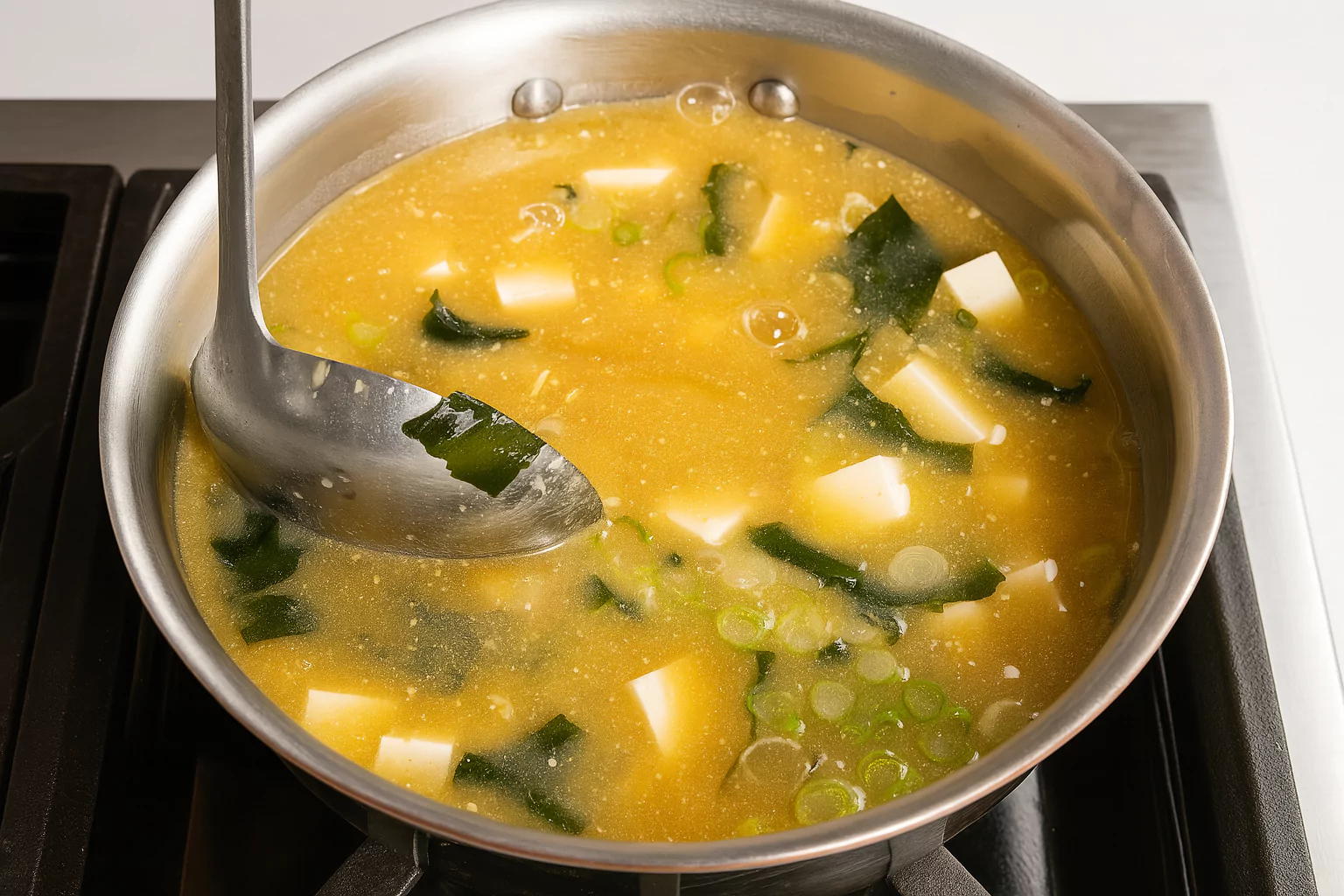
Hana’s Recipe Tips
My friend Hana, who grew up in Osaka, always reminds me of these important points when teaching others how to cook miso soup:
- Balance is key: Taste your miso soup before serving. Some miso is saltier than others.
- Don’t rush: Letting the dashi steep slowly makes the soup taste better.
- Try seasonal ingredients: In winter, she adds daikon or carrots. In summer, she keeps it light with tofu and wakame only.
These little touches make homemade miso soup feel like home.
Storage and Make-Ahead Tips
Miso soup is best fresh, but you can store and reheat it with care. If you’re learning how to cook miso soup, remember these tips:
- Refrigerator: Store leftover soup (without green onions) for up to 3 days in a sealed container.
- Freezer: Freeze the dashi (not the full soup) for up to 2 weeks.
Important: Don’t freeze tofu or miso soup with seaweed—it changes texture.
When Reheating:
- Use gentle heat. Don’t let it boil.
- Add fresh miso paste and green onions just before serving.
Recipe Variations
Want to try something different? Here are a few fun and creative ideas for those who already know how to cook miso soup and want to explore:
- Mushroom Miso Soup – Add sliced shiitake or enoki mushrooms.
- Spicy Miso Soup – Add a small spoon of chili paste or grated ginger.
- Egg Drop Miso Soup – Swirl in a beaten egg as the soup simmers.
- Vegetable Miso Soup – Add chopped carrots, potatoes, or daikon.
The base stays the same—you just switch up the toppings!
Homemade Miso Soup 味噌汁
Course: Main CoursesCuisine: JapaneseDifficulty: Medium2
servings5
minutes15
minutes75
kcalThis authentic miso soup is made with a light dashi broth, soft tofu, wakame seaweed, and miso paste. A comforting Japanese classic ready in just 20 minutes!
Ingredients
4 cups water
1 piece kombu (dried kelp, about 10g)
1 cup bonito flakes (katsuobushi) – optional for vegetarian version
4 tablespoons miso paste (white or red)
7 oz soft/silken tofu (cubed)
1 tablespoon dried wakame seaweed
1 green onion (thinly sliced)
Directions
- Make the Broth (Dashi):
Pour 4 cups of water into a pot and add the kombu. Let it soak for 30 minutes if you have time. Then heat slowly over medium-low. Right before it boils, remove the kombu. - Add Bonito Flakes:
Add 1 cup of katsuobushi to the water. Let it simmer briefly for 30 seconds, then turn off the heat and let the flakes settle. After 10 minutes, strain the liquid and discard the flakes. You now have your dashi. - Dissolve the Miso Paste:
Warm the dashi gently (do not boil). Add miso paste into a ladle, pour some hot dashi into it, and stir to dissolve before adding it back to the pot. - Add Tofu and Wakame:
Carefully add cubed tofu and dried wakame. Heat gently for 2–3 minutes to warm the tofu and rehydrate the seaweed. - Garnish and Serve:
Add green onions just before serving. Do not boil the soup after adding miso. Serve hot.
Notes
- For a vegetarian version, skip the bonito flakes and use dried shiitake mushrooms with kombu to make dashi.
Avoid boiling miso paste—it loses flavor and nutrients.
Miso soup pairs perfectly with a bowl of steamed rice or grilled fish.
Conclusion
Now you know how to cook miso soup—and not just any miso soup, but one that’s full of tradition, flavor, and personal touches. This dish is more than a soup; it’s a daily ritual in many Japanese homes and a way to care for your body and soul. Try making it once, and you’ll likely add it to your weekly meals.
Don’t be afraid to experiment. Start with the basic version, then try different miso pastes, vegetables, or toppings. Every bowl you make can be a little different but always delicious. And the more you practice how to cook miso soup, the better and faster you’ll become.
FAQs
1. Can I use miso soup packets instead of making it from scratch? Yes, but the flavor won’t be the same. Homemade miso soup gives you better taste and control over ingredients.
2. What kind of miso should I use? White miso (shiro miso) is mild and sweet, great for beginners. Red miso (aka miso) is stronger and saltier. Try both and see which you prefer.
3. Is miso soup healthy? Yes! It’s low in calories, high in nutrients, and contains good bacteria from fermentation that help digestion.
4. How do I make it vegetarian or vegan? Skip the bonito flakes and make dashi using only kombu or with dried shiitake mushrooms.
5. Can I make miso soup ahead of time? You can make the dashi in advance and store it. But always add miso and toppings right before serving for best flavor and texture.
6. Why should I not boil miso soup? Boiling kills the aroma and destroys the probiotics in the miso paste. Always warm it gently.
You’ve just learned everything you need to know about how to cook miso soup. Whether you enjoy it with rice for breakfast or as a starter for dinner, this classic dish will become one of your favorites.
You’ve just learned everything you need to know about how to cook homemade miso soup. Whether you enjoy it with rice for breakfast or as a starter for dinner, this classic dish will warm your heart and body. Try it today, and bring a taste of Japan into your home!
🌸 Planning a visit to Kyoto? Don’t miss this guide on how to reach Otagi Nenbutsu-ji Temple from Kyoto and explore a hidden gem full of cultural charm.
